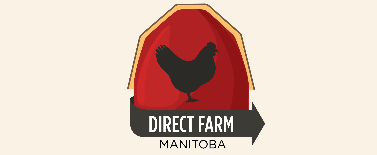How to Produce Food – Sustainably
 Thursday, February 28, 2013 at 9:58AM
Thursday, February 28, 2013 at 9:58AM At a February 13 meeting, thirty-five people came together to discuss what can be done to promote a more sustainable food system in southeastern Manitoba. We heard many concerns. Many thought much of our food is not as healthy as it could be. Others thought the current price of our food does not reflect the true cost of production. Many contended that current food prices do not adequately reward those involved in food production. We were concerned that too many food consumers are woefully ignorant of the whole food system; in fact, in some families the skill of food preparation is actually being lost.
The underlying concern, the concern that brought these people together, was a conviction that the conventional food system does not address the vulnerabilities in our food system. It, by its very nature, is not concerned about the sustainability of the system. Consumers want cheap food, and the conventional food system responds to that demand. Brenda Gregoire, general manger of the Steinbach Farmers Market, summarized things well, saying, “As long as I, as consumer, show a preference for the cheap food commodities, I will obviously get inferior food. Nevertheless, we all do it. In fact” said Brenda, “we go for the cheapest food, and then spend the money we saved on food to buy designer jeans, a holiday on the Caribbean or a house makeover. Until we all change our attitude, that's the way it will be.”
Consider just some of the vulnerabilities within the conventional food system – the system we depend on for our sustenance. Most of the food we buy moves substantial distances. Most of our beef, for example, comes from Alberta. That does not mean we do not grow beef in this region. It just means there is no large beef abattoir closer than Alberta. There is a small beef abattoir in Beausejour, but in terms of the quantity of beef consumed in southeastern Manitoba, it is insignificant. Or consider wheat flour, and all the derivatives of wheat flour that we consume. True there is a small flourmill in Ellie, but most of the flour we consume is milled outside our province. Lettuce and tomatoes come from California, bananas from the Caribbean – and the list goes on and on.
What's wrong with that? Well it makes us extremely vulnerable. One hardly needs imagination to think of events that could totally disrupt our transportation system – our food delivery system. And when the food delivery system is disrupted, not only will we lack the infrastructure to process locally grow food, but many of the skills needed to effectively grow foods locally will also have been lost. So why is it that our food moves such long distances? It moves these distances because that is the cheapest way to put food on the table. Economies of scale determine that the larger the factory, the cheaper its output. Consumers prefer cheap food.
So the group thought hard about how we might change consumer preferences, and perhaps even how we might change government policies. We did not come up with any easy answers, but we agreed there was value in networking, and agreed to meet again.
By Eric Rempel



Reader Comments